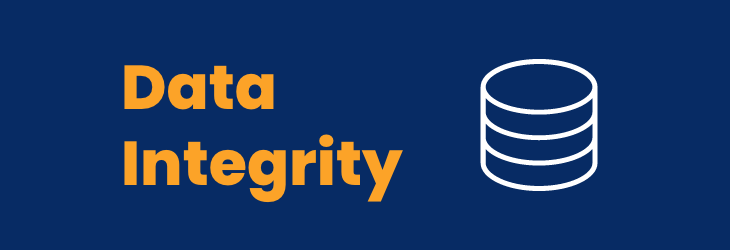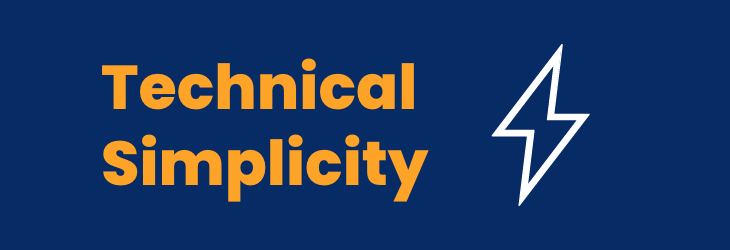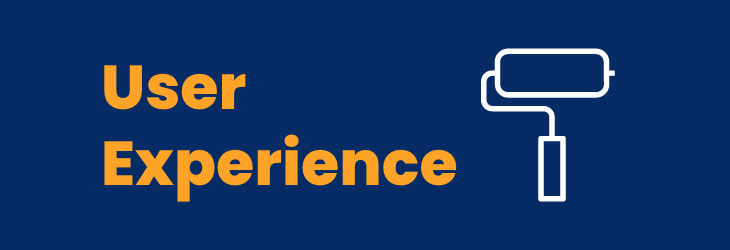
If you’re trying to equip your team with the right software, you’re probably discovering that there’s a lot to consider when buying a new solution: price, security, functionality, integration. And if you’re building your company’s software stack on top of the Salesforce stack, you’ve probably come across one additional consideration: What’s a Salesforce native app? And does it even matter for my business?
While we’ve already tackled what a Salesforce native app is, specifically, today we’re tackling that second part: Does buying a Salesforce native app even matter for my business?
For smaller businesses who are singularly focused on price or a specific functionality in their software procurement process, the answer, truthfully, could be that it may not matter.
But for larger businesses or businesses with multiple considerations, the answer is: It could matter more than you know. Whether or not you buy a Salesforce native app could impact everything from your day-to-day operations to your bottom line.
Based on our work helping Salesforce customers build out their software stack, and the decade of experience in successful and transformative Salesforce implementation from our sister-company, Synaptic Partners, we’ve distilled 13 key advantages of going with a Salesforce native app for your business to consider.
Jump to a section:

When you move forward with a Salesforce native app, you’re moving forward with a trusted partner, already vetted by Salesforce itself.
1. Rely on Salesforce Uptime (SLAs)
If you’re less familiar with the software procurement process, you may not have thought much about service-level agreements, or SLAs. They’re an agreement you sign with each vendor, defining the level of service you’ll receive. Among other things, in the SaaS space, they’ll commonly cover server uptime and downtime, which dictates the amount of time you can expect your app to be available for use and for how long it’ll be down for maintenance.
Salesforce native apps all rely on a single set of servers: the servers that house your Salesforce instance. Therefore, a single SLA–the one you signed with Salesforce -covers Salesforce and all native apps.
If you choose to use a non-native application, however, your organization must consider managing multiple Service Level Agreements for server uptime/downtime.
2. Remain Compliant
Data compliance and security policy can be a tricky field to navigate for any business. Every single software solution that handles your organization’s data must be compliant for your business to be compliant. Not to mention the different and frequently changing requirements of different certifications.
Luckily, Salesforce native applications are able to lean on the compliance certifications that Salesforce holds. Since Salesforce has already done the work to ensure that its platform meets the requirements of many major compliance certificates, such as FedRamp, GDPR, HIPAA, SOC 2, and more, any customer data also used by Salesforce native apps is also compliant.
If your business requires these certifications, and you choose to procure an off-platform (or non-native) application, you’ll be required to acquire these certifications separately.
3. Avoid Hidden Costs
This one’s pretty straight-forward. Implementing and integrating a new software tool into your stack can sometimes have a lot of hidden costs not included on the sticker price. These can include costs for data migration, integration maintenance, and more.
Because Salesforce native tools are built on top of the Salesforce platform, you won’t need to migrate data or maintain an integration. You can’t be surprised with those costs because those services aren’t required.
Additionally, it is important to consider the potential costs involved with the risk of allowing enterprise data to exist off-platform. At the risk of stating the obvious: data breaches are expensive and not worth the risk. It would be unfair to claim that all off-platform applications uniformly present a high degree of risk, as many maintain the highest of security standards. But the point here is that going off platform creates another degree of vulnerability, one that can be costly and one which would not exist if an organization chooses a Salesforce native app.
4. Rely on Third-Party Validation
When selecting a software solution for your business, it can be hard to know who you can trust. Luckily, Salesforce has a method to help you out. For a Salesforce native app to be offered on the Salesforce AppExchange, it must be reviewed by Salesforce, a process that includes a full qualitative analysis and code review by the Salesforce team. Therefore, when considering a Salesforce native application, you immediately know that a party other than the app provider has given a stamp of approval regarding how the app works, and how the app has been built. Off-platform apps don’t receive the same scrutiny from the Salesforce team.
There is an important distinction to note, however: If an app is not truly Salesforce native, but instead has a “Native Connector,” then only the connector–not the entire app– gets scanned, tested, and validated by Salesforce. You can learn more about the difference between Salesforce native apps and apps with a “Native Connector” in our article What is a Salesforce Native App?

When you move forward with a Salesforce native app, you’re minimizing risks to your organization’s data.
5. Ensure Data Security
Salesforce is not only widely recognized as having best-in-class secure cloud technology, but also provides secure cloud applications to some of the largest companies in the world. Because Salesforce native apps are built entirely on the Salesforce platform, they’re also built on the security of the Salesforce platform. This decreases your risk for data breach and ensures that your enterprise data is safe and secure.
Should you choose a non-Salesforce native app, however, your company’s data could potentially be stored in different servers from the ones housing your Salesforce data. Many times, it’s unclear if these servers maintain the same security standards as Salesforce’s servers.
6. Utilize Salesforce Permissions
Native applications rely on Salesforce’s advanced and flexible data security model, allowing fully-customizable permission structures for different roles within your organization. The Salesforce data security model allows your organization to operate at high speed while ensuring no one is able to access data they are not supposed to see. With Salesforce native apps, when you set up user permissions in Salesforce, the user’s visibility, permissions, and access are all automatically honored. I.e. permissions and visibility you create within Salesforce are automatically carried over to native apps.
Non-native applications require a separate security model, which can frequently be much less flexible than Salesforce’s security model.
7. Leverage Existing User Management/Authentication
Managing users for all of your different software tools can be surprisingly time-consuming. If you go with a Salesforce- native app that requires authenticated users, it will rely on the Salesforce user model, as opposed to a separate set of users or logins. In short, you’ll be able to use Salesforce’s single sign-on (SSO) feature that allows you to login to the app using your Salesforce credentials. With a Salesforce-native application, you’ll be able to configure your users only once, and all of their information, visibility, and access will be managed in one place.
In the case of Youreka’s mobile app, or any other app that relies on Salesforce’s OAuth2.0 authentication, single sign-on capabilities that are set up on Salesforce are readily available to native apps.
Should you go with an off-platform app, you would be required to create a separate configuration and/ setup of single sign-on, and manage that process separately.

When you move forward with a Salesforce native app, you’re able to, frankly, do more.
8. Leverage the Power of the Platform
With a Salesforce native application, you can use and, often, configure Salesforce core capabilities. Significant features such as system automation, approvals, email alerts, metadata configuration, API access, security and visibility, reporting and more are all readily available with native apps. As an example, when you complete a task in a Salesforce native app, such as completing a form in Youreka, you’ll be able to trigger workflows, alerts, and approvals built inside Salesforce.
While these features can sometimes be used for non-native apps integrated with the Salesforce platform, depending on the situation, if it’s possible to use these capabilities at all, they can frequently only be used in a limited capacity.
9. Configure to Your Specifications
If you have a complex use-case, business model, or organization structure, any software solution you purchase may require a lot of customization to meet your unique needs. ] And as a Salesforce user likely already familiar with the ways in which Salesforce can be customized, there’s good news: Salesforce native apps can be configured and customized in the same way, using the Salesforce platform.
Off-platform applications will require configuration on their own in order to meet business requirements. To be fair, some off-platform providers go to great lengths to provide customers with the same amount of flexibility and customization as Salesforce. However, many others fail to provide customers with the flexibility that is often required for complex business requirements.
When you choose a native app, you can be certain that it can be configured and customized, using Salesforce tools, to meet the unique needs of a business.

When you move forward with a Salesforce native app, you’re able to maintain high-quality data.
10. Maintain an Audit Trail
When searching for a software solution, knowing who is doing what within the tool is sometimes as important as the functionality itself.
For example, off-platform applications often require the usage of a single integration user to manage the connection between Salesforce and their system. This means that any
Salesforce data edited using the third-party app will show as edited by “Integration User,” or something similar. Salesforce will be unable to identify the individuals who actually updated the information.. The usage of system audit fields and Salesforce user identities is not possible if an off-platform application is using a single integration user. And in our experience, many of them do. (If you’re considering a non-native app, be sure to ask whether or not this is the case!)
Consider this: if an organization uses a single integration user to manage Salesforce data, dozens, hundreds, or even thousands of actions taken by all of the users off platform will appear as though a single person is doing them in Salesforce. This creates challenges for organizations who wish to keep a sound audit trail and maintain integrity in their Salesforce data.
Because Salesforce native apps leverage your existing Salesforce users and authentication, there’s no need for an integration user. Each user’s name will be identified alongside their actions, creating an audit trail.

When you move forward with a Salesforce native app, it’s simpler from an organizational technology standpoint.
11. Avoid Integrations and Data Delays
If timing is important to your organization, you’re probably aware of data delays caused by app integration. I.e. if you’re using an integration (as you’d likely be doing with a non-native app), you’ll need to wait for the integration or connector to sync to see updates in the data; you won’t be able to see data changes in real-time. The sync between these apps can happen every few minutes, or even once per day.
With native apps, you can expect seamless and real-time access to data and information, because the data never leaves the platform. No need to wait for integrated data.
12. Simplify with Single Database/API
Salesforce native apps use your Salesforce database.
The introduction of a non-native app might mean the introduction of a separate, proprietary API. That means that there will be additional integration and data management considerations when selecting an off-platform provider.

When you move forward with a Salesforce native app, you provide a seamless experience for your end users.
13. Create a Consistent User Experience
Salesforce native applications often use the Salesforce Lightning Design System, or the UI elements that make up Salesforce’s interface. This means these apps often look and feel like Salesforce does. Therefore, users who are already familiar with the platform are more likely to be comfortable working with native applications – and are quicker to adopt. They’ll already have “transferable skills” to your native application (they’ll have some idea where to find things, how to troubleshoot, etc.).
When applications off-platform are introduced, however, you need your end-users to build expertise in a different area, which can slow adoption and create challenges for users as they build competencies.
If your organization values any of the 13 items above, you may want to consider a Salesforce native app. To be clear, we do not necessarily believe that all off-platform applications are lacking. And we certainly do not believe it is fair to declare that all off-platform applications will create inefficiencies and risk for Salesforce customers. As an app provider who’s been in the Salesforce ecosystem for many years, we’re familiar with many applications that are non-native and provide great value for their customers. Our intention here is to demonstrate the 13 cases where choosing a Salesforce native app has inherent value.




